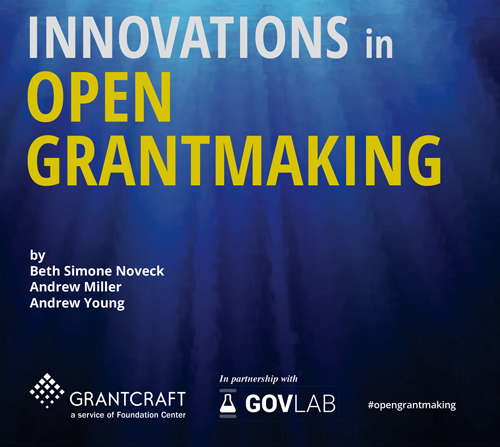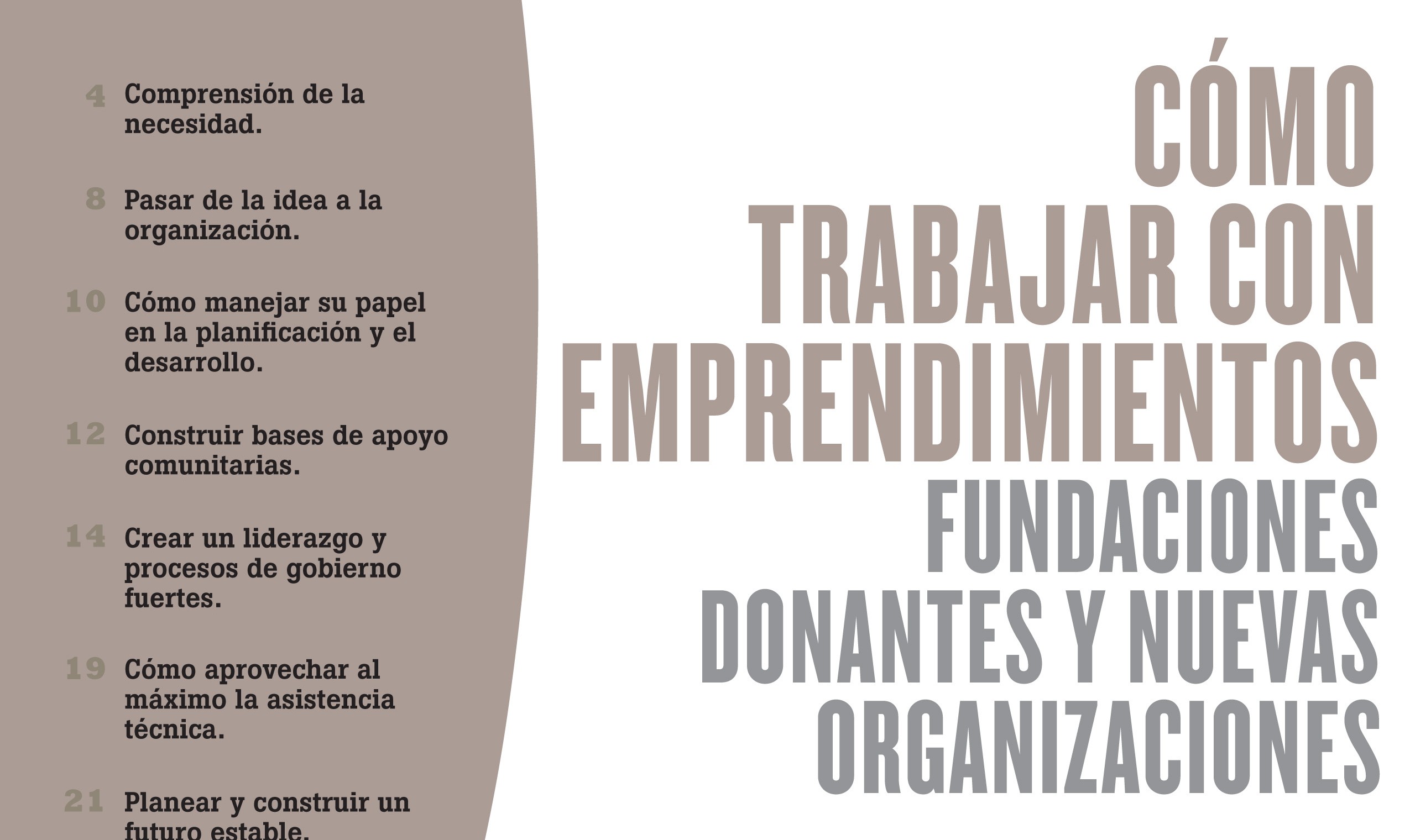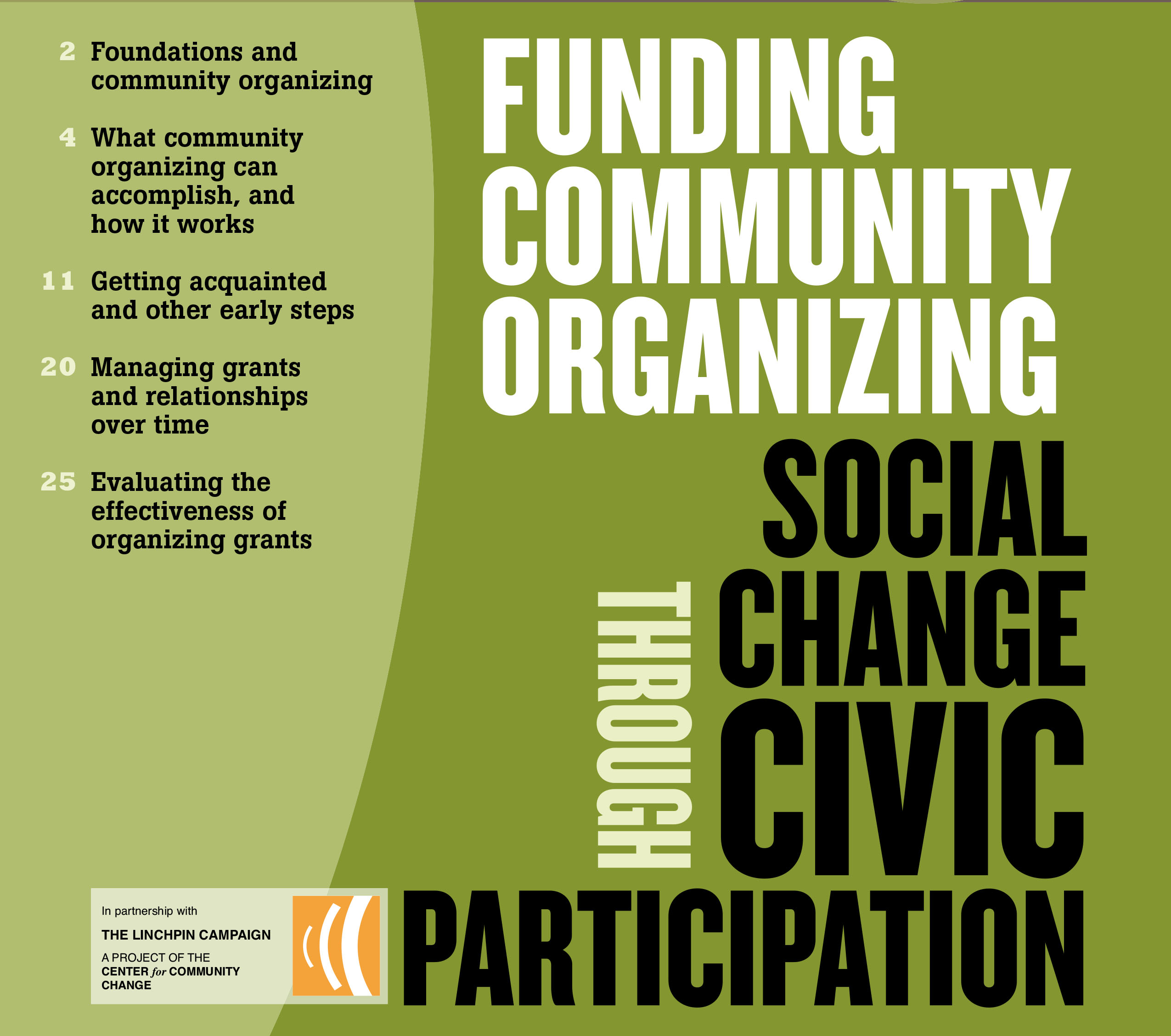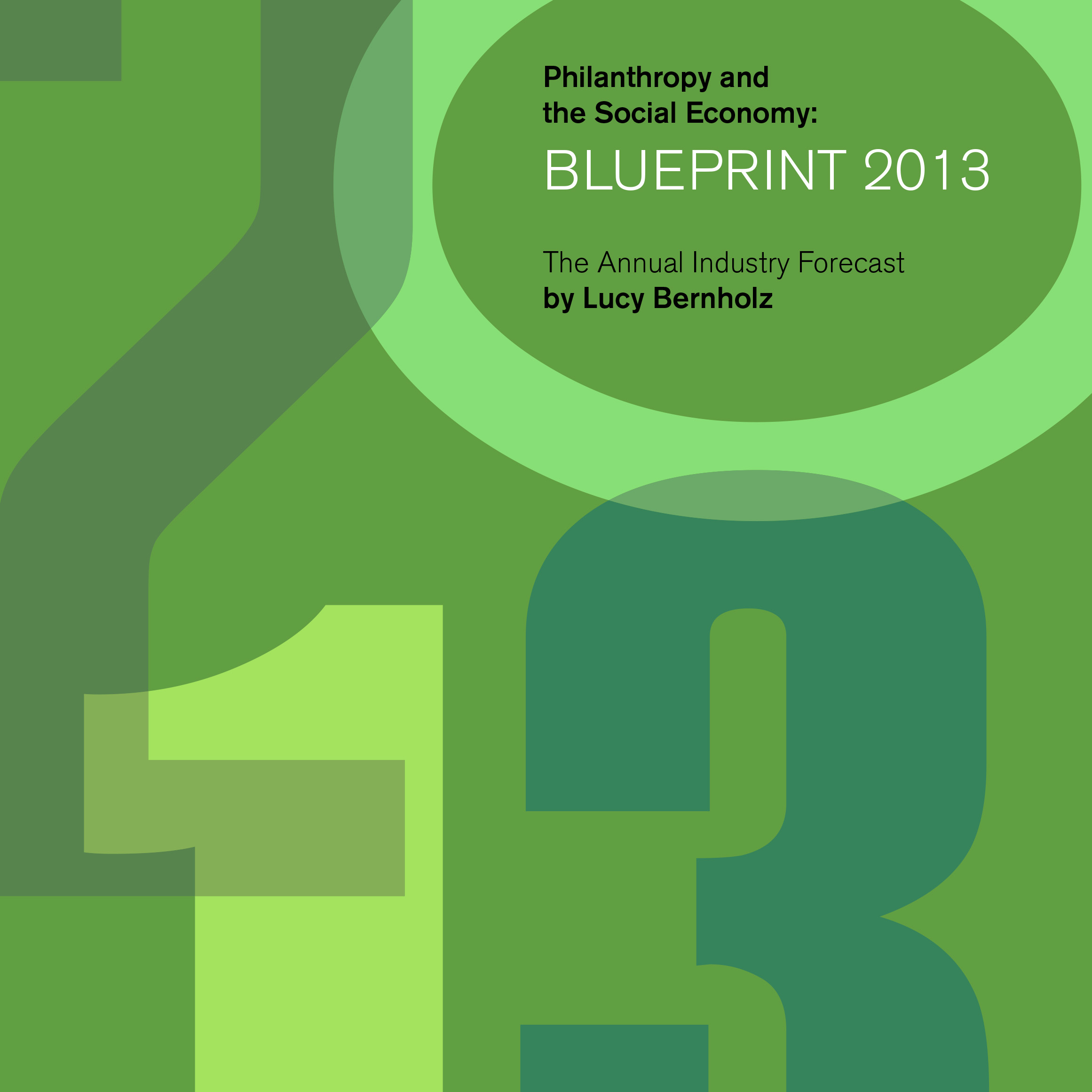Working with Start-Ups Grantmakers and New Organizations
In this guide, grantmakers from a wide range of funding organizations describe their experiences as supporters of new nonprofits, or start-ups. Find out how they negotiated the path from idea to organization, and what they learned along the way about how to solve problems and help an organization sustain itself into the future. Contributors to this guide also offer their recommendations for online capacity-building resources.
Highlights
- Deciding whether to fund a start-up
- Figuring out the nuts and bolts
- Helping a new organization build its capacity
- Managing your role
What's in the Guide?
- Understanding the Need: In deciding whether or not to fund a start-up, the first step is figuring out if a new organization is needed. It also makes sense to ask if the timing is right, if the right people are involved, and if you're the right funder for the job.
- Moving from Idea to Organization: The nuts and bolts of assembling a sound organization may not be thrilling, but they usually have as much to do with long-term success or failure as the quality of the original idea itself.
- Managing Your Role in Planning and Development: Eventually, a new organization needs to be independent, which means the funder's guiding and advising role normally has to wind down. How large that role should be and how long it should last are questions that need to be considered early, and maybe revisited later, as the start-up process moves along.
- Building Supportive Constituencies: By involving interested people and helping the grantee communicate and make connections, a funder can strengthen the position of a new organization.
- Establishing Strong Leadership and Governance: Every organization needs effective executive leadership and a committed board. Funders are often involved in recruiting the right people for those roles and helping them to work well together.
- Getting the Most from Technical Assistance: Whether expert advice is paid for or donated, it's worthwhile to keep a few principles in mind.
- Planning and Building a Stable Future: The duration and terms of the initial grant, as well as the financial plan, determine a lot about the organization's sustainability and its ability to attract other funders.
- Helping a New Organization with Fundraising: Fundraising requires skill, contacts, and confidence — all of which a new organization needs to develop in its first few years. That process can be improved with help from an interested funder.
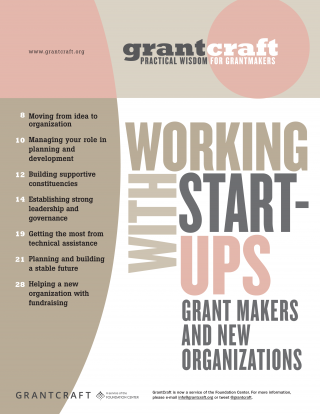
Categories
Content type
Strategies
Issues
-
Link to Supporting Grantee Capacity
Financial Challenge Advice A Conversation with a Management Adviser
Susan Kenny Stevens is a consultant and author specializing in financial management and organizational development. A GrantCraft interviewer spoke with her recently about the financial challenges typically faced by new organizations.
Read more -
Link to Supporting Grantee Capacity
Lessons from Grantmakers on Working with Startups
- Don't fund a start-up unless it's really needed. Many contributors questioned what they see as a basic premise of many start-up organizations: that there aren't enough nonprofit organizations out there already.
-
Link to Supporting Grantee Capacity
What Grantees Wish Grantmakers Knew
Learn more about the funding interests and specialties of other funders. As one nonprofit director explained, “I hear from start-up grantees all the time who tell me that they asked their program officer where to look for funding and were told, ‘I don’t know. Go ask my other grantees.’
Read more -
Link to Supporting Grantee Capacity
Helping a New Organization Fundraise
Serve as a “reference.” Being available to talk to potential funders can help open doors for a new organization.
Read more -
Link to Supporting Grantee Capacity
Being Available and Helpful After the Launch
Meeting the demands of funders can be difficult and confusing for the people involved with a start-up, especially if they’ve never run an independent organization or been accountable to an external grantmaker.
Read more -
Link to Supporting Grantee Capacity
Planning and Building a Stable Future
The initial grant to launch a start-up organization can be crucial for helping the organization develop a secure and sustainable funding base down the road. Meanwhile, though, it should also provide a start-up with the early security it needs to define its mission.
Read more -
Link to Supporting Grantee Capacity
Getting the Most From Technical Assistance
Technical assistance can’t solve everything. As one grantmaker observed, technical assistance is “no substitute for the three things you really need — a strong entrepreneur, a strong idea, and a strong market.” Even with those elements in place, he cautioned, it’s sometimes necessary to admit that external solutions won’t fix an organization’s problems: “I was a technical assistance provider before I came to the foundation, and I saw a lot of situations where advice was not going to solve the problem.”
Read more -
Link to Supporting Grantee Capacity
Should a Foundation Have a Seat on the Board?
Some grantmaking organizations prohibit staff members from serving on the board of any organization they support, to avoid potential conflicts between their role as a grantmaker and their role as a board member with fiduciary responsibility to the organization they serve.
Read more - Link to Supporting Grantee Capacity
-
Link to Supporting Grantee Capacity
Building in Diversity
The opportunity to build a new organization around diversity and related core values is one of the most appealing aspects of the start-up process:
Read more
In this guide, grantmakers from a wide range of funding organizations describe their experiences as supporters of new nonprofits, or start-ups. Find out how they negotiated the path from idea to organization, and what they learned along the way about how to solve problems and help an organization sustain itself into the future. Contributors to this guide also offer their recommendations for online capacity-building resources.
Highlights
- Deciding whether to fund a start-up
- Figuring out the nuts and bolts
- Helping a new organization build its capacity
- Managing your role
What's in the Guide?
- Understanding the Need: In deciding whether or not to fund a start-up, the first step is figuring out if a new organization is needed. It also makes sense to ask if the timing is right, if the right people are involved, and if you're the right funder for the job.
- Moving from Idea to Organization: The nuts and bolts of assembling a sound organization may not be thrilling, but they usually have as much to do with long-term success or failure as the quality of the original idea itself.
- Managing Your Role in Planning and Development: Eventually, a new organization needs to be independent, which means the funder's guiding and advising role normally has to wind down. How large that role should be and how long it should last are questions that need to be considered early, and maybe revisited later, as the start-up process moves along.
- Building Supportive Constituencies: By involving interested people and helping the grantee communicate and make connections, a funder can strengthen the position of a new organization.
- Establishing Strong Leadership and Governance: Every organization needs effective executive leadership and a committed board. Funders are often involved in recruiting the right people for those roles and helping them to work well together.
- Getting the Most from Technical Assistance: Whether expert advice is paid for or donated, it's worthwhile to keep a few principles in mind.
- Planning and Building a Stable Future: The duration and terms of the initial grant, as well as the financial plan, determine a lot about the organization's sustainability and its ability to attract other funders.
- Helping a New Organization with Fundraising: Fundraising requires skill, contacts, and confidence — all of which a new organization needs to develop in its first few years. That process can be improved with help from an interested funder.


